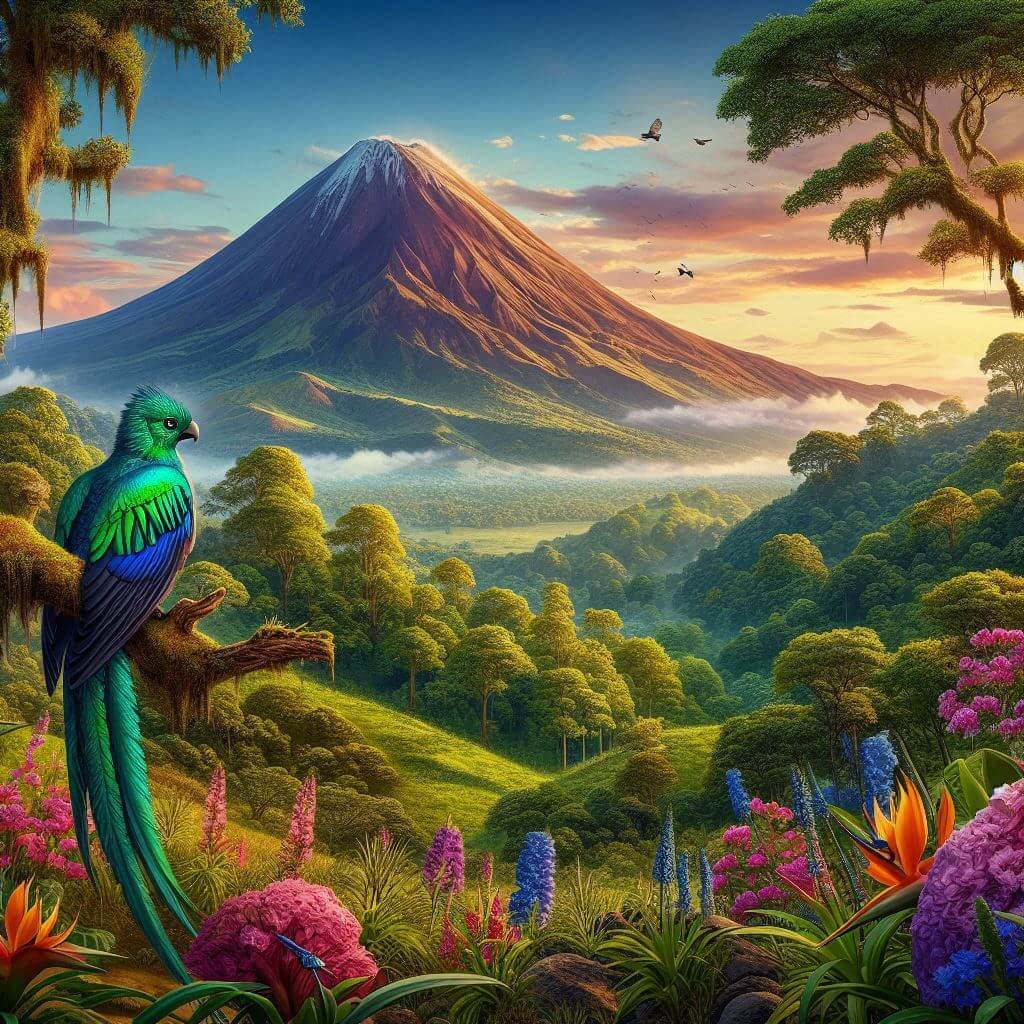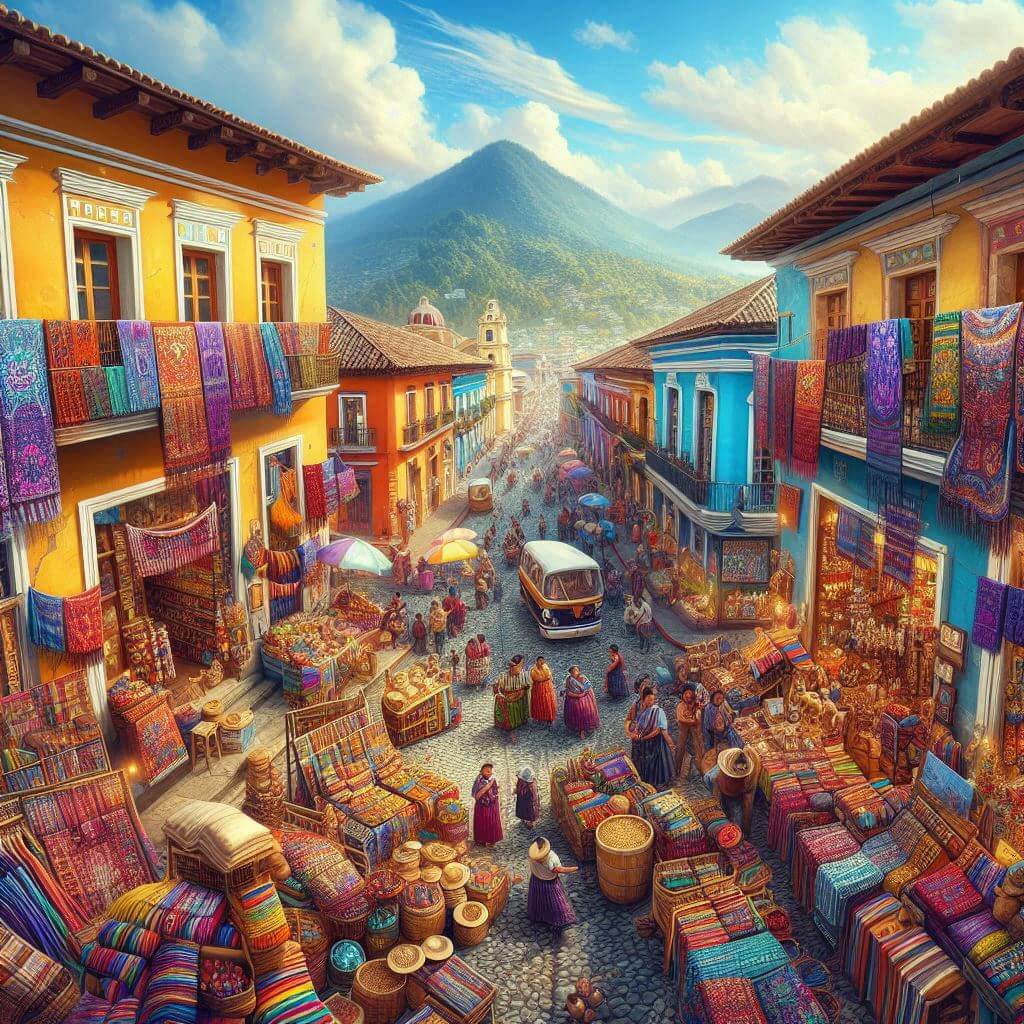The flag of Guatemala consists of three vertical stripes of light blue, white, and light blue, with the national emblem in the center of the white stripe. This distinctive design encapsulates Guatemala's geographical features, historical legacy, and national aspirations, making it a powerful symbol of Guatemalan identity and pride.
Guatemala information
| National Flag Day | — |
| Sovereign state | Yes |
| Official name | Republic of Guatemala |
| Capital | Guatemala City |
| Population | 17,915,567 |
| Area | 108,889 km² |
| Currency | Guatemalan quetzal (GTQ) |
| Language | Spanish, indigenous languages |
| Continent | North America |
| Region | Central America |
| Subregion | — |
| Borders | Belize, El Salvador, Honduras, Mexico |
| Timezone | Central America Time (CAT) UTC-6 |
| Calling code | +502 |
| Top-level domain | .gt |
History of the Guatemalan Flag
 The current flag of Guatemala was officially adopted on August 17, 1871, following a period of liberal reforms led by President Miguel García Granados. However, its design has roots in the earlier flags of the Federal Republic of Central America, of which Guatemala was a part from 1823 to 1841.
The current flag of Guatemala was officially adopted on August 17, 1871, following a period of liberal reforms led by President Miguel García Granados. However, its design has roots in the earlier flags of the Federal Republic of Central America, of which Guatemala was a part from 1823 to 1841.
The adoption of this flag marked a significant moment in Guatemala's history, symbolizing the country's independence and its unique identity within Central America. Over the years, minor modifications have been made to the central emblem, but the basic design of the flag has remained consistent since its adoption.
Symbolism and Design of the Guatemalan Flag
The Guatemalan flag is rich in symbolism, with each element carefully chosen to represent different aspects of the nation's geography, history, and values:
- Light Blue Stripes: Symbolize the Pacific Ocean to the west and the Caribbean Sea to the east, highlighting Guatemala's position between two oceans. The blue color also represents the sky and ideals of justice and loyalty.
- White Stripe: Represents peace and purity, values cherished by the Guatemalan people. It also symbolizes the land between the two oceans.
- National Emblem: Placed in the center of the white stripe, it contains several symbolic elements:
- Quetzal Bird: Guatemala's national bird, symbolizing liberty and independence.
- Parchment Scroll: Bears the date of Central America's independence from Spain (September 15, 1821).
- Crossed Rifles: Represent Guatemala's readiness to defend itself and its willingness to resort to arms if necessary to protect its freedom.
- Crossed Swords: Symbolize honor and the country's military tradition.
- Laurel Wreath: A symbol of victory and triumph.
Usage and Significance of the Guatemalan Flag
 The flag of Guatemala is a symbol of national identity and pride, prominently displayed during official ceremonies, national holidays, and cultural events. It flies on government buildings, schools, and public spaces across the country. The flag plays a significant role in fostering national unity and is often used to celebrate Guatemala's rich cultural heritage and historical achievements.
The flag of Guatemala is a symbol of national identity and pride, prominently displayed during official ceremonies, national holidays, and cultural events. It flies on government buildings, schools, and public spaces across the country. The flag plays a significant role in fostering national unity and is often used to celebrate Guatemala's rich cultural heritage and historical achievements.
During important national celebrations, such as Independence Day on September 15, the flag is widely displayed by citizens, reflecting the strong sense of patriotism among Guatemalans.
Interesting Facts About the Guatemalan Flag and Guatemala
- The quetzal bird depicted on the flag is not only Guatemala's national bird but also gave its name to the country's currency, the Quetzal.
- Guatemala is known as the "Land of Eternal Spring" due to its consistently temperate climate in the highlands, reflecting the natural beauty symbolized in the flag's colors.
- The flag's design was inspired by the flag of the United Provinces of Central America, reflecting Guatemala's historical connections within the region and its role in Central American unity.
- Guatemala is home to a rich Mayan heritage, with numerous ancient sites and a significant indigenous population that continues to preserve traditional cultures and languages.
- The country is renowned for its coffee production, with Guatemalan coffee considered some of the finest in the world, contributing significantly to the nation's economy symbolized by the flag.
- Guatemala's diverse landscape includes 37 volcanoes, some of which are active, reflecting the dynamic and varied nature of the country represented by the flag's symbolism.
The Guatemalan flag, with its distinctive design and rich symbolism, stands as a powerful emblem of the nation's identity, blending elements of natural beauty, historical legacy, and aspirations for peace and prosperity. It serves as a constant reminder of Guatemala's unique place in Central America and its ongoing journey as a sovereign nation.